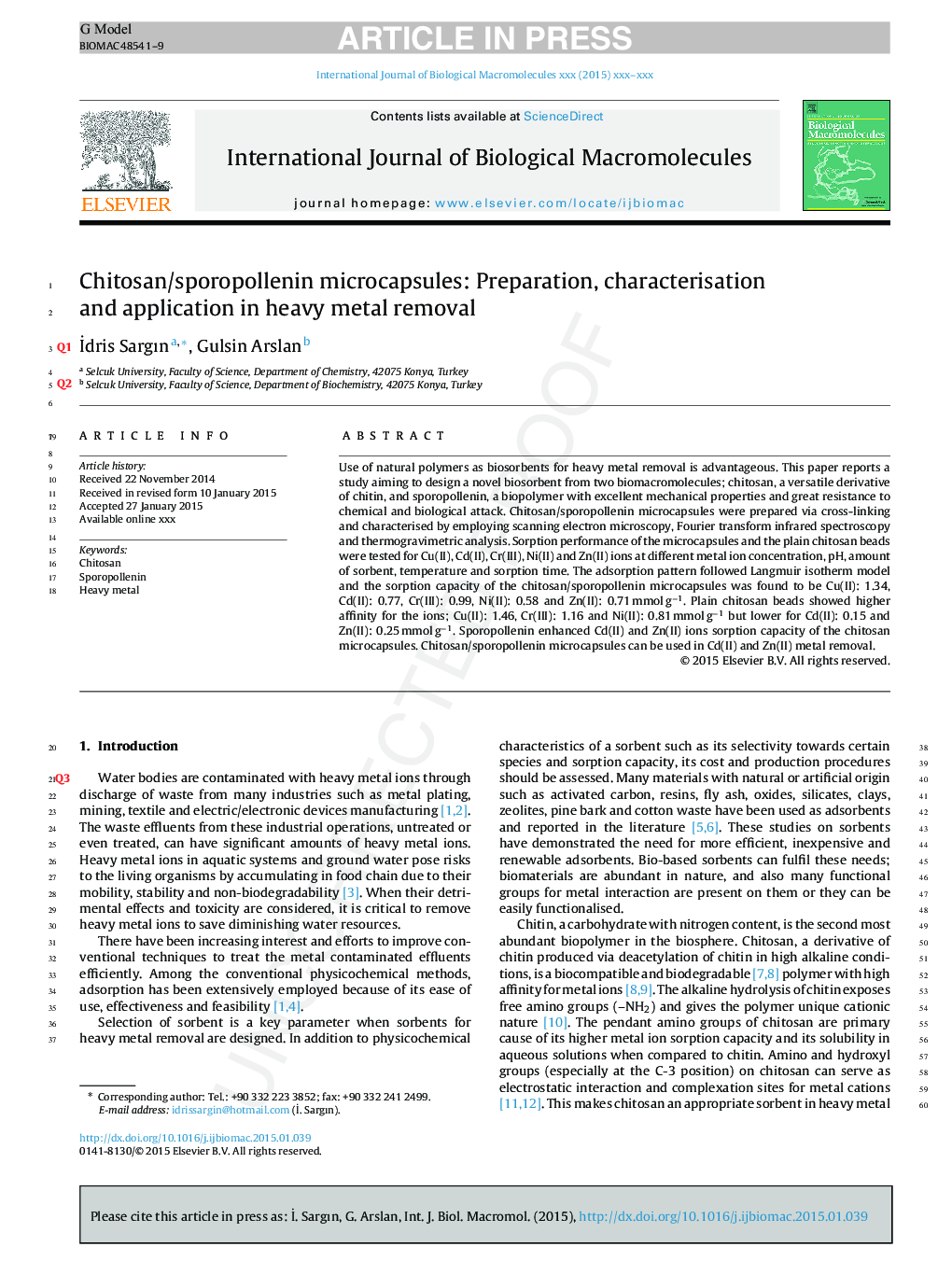| Article ID | Journal | Published Year | Pages | File Type |
|---|---|---|---|---|
| 8331609 | International Journal of Biological Macromolecules | 2015 | 9 Pages |
Abstract
Use of natural polymers as biosorbents for heavy metal removal is advantageous. This paper reports a study aiming to design a novel biosorbent from two biomacromolecules; chitosan, a versatile derivative of chitin, and sporopollenin, a biopolymer with excellent mechanical properties and great resistance to chemical and biological attack. Chitosan/sporopollenin microcapsules were prepared via cross-linking and characterised by employing scanning electron microscopy, Fourier transform infrared spectroscopy and thermogravimetric analysis. Sorption performance of the microcapsules and the plain chitosan beads were tested for Cu(II), Cd(II), Cr(III), Ni(II) and Zn(II) ions at different metal ion concentration, pH, amount of sorbent, temperature and sorption time. The adsorption pattern followed Langmuir isotherm model and the sorption capacity of the chitosan/sporopollenin microcapsules was found to be Cu(II): 1.34, Cd(II): 0.77, Cr(III): 0.99, Ni(II): 0.58 and Zn(II): 0.71 mmol gâ1. Plain chitosan beads showed higher affinity for the ions; Cu(II): 1.46, Cr(III): 1.16 and Ni(II): 0.81 mmol gâ1 but lower for Cd(II): 0.15 and Zn(II): 0.25 mmol gâ1. Sporopollenin enhanced Cd(II) and Zn(II) ions sorption capacity of the chitosan microcapsules. Chitosan/sporopollenin microcapsules can be used in Cd(II) and Zn(II) metal removal.
Keywords
Related Topics
Life Sciences
Biochemistry, Genetics and Molecular Biology
Biochemistry
Authors
İdris Sargın, Gulsin Arslan,
